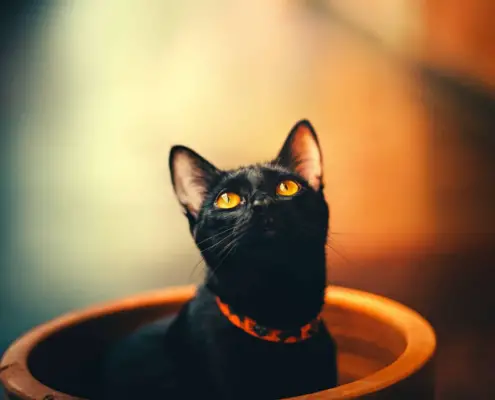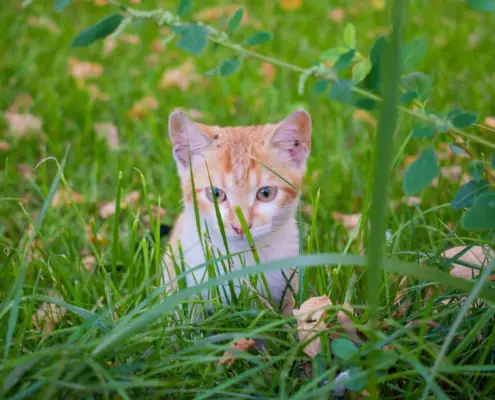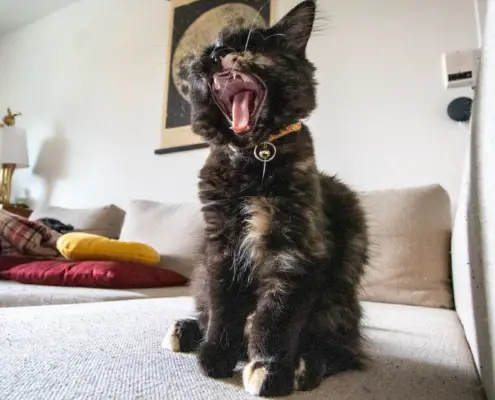Cats are fascinating creatures, with their graceful movements and mysterious nature. One aspect of their behavior that has often intrigued cat owners is their habit of being most active during the twilight hours. But what does it mean for a cat to be crepuscular? In this article, we will delve into the daytime secrets of our feline friends and explore the world of crepuscular behavior in cats.

What does it mean for a cat to be crepuscular?
Crepuscular animals are those that are primarily active during dawn and dusk. Unlike diurnal animals that are active during the day, or nocturnal animals that are active at night, crepuscular animals have adapted to be most active during the low-light conditions of sunrise and sunset. Cats, with their keen senses and predatory instincts, are known to exhibit crepuscular behavior. This means that they are more likely to engage in hunting, playing, and exploring during the early morning and late evening hours.
The natural instincts of cats and their hunting patterns
To understand why cats are crepuscular, it’s important to look at their natural instincts and hunting patterns. Cats are natural-born predators, and their ancestors were solitary hunters. These hunters would take advantage of the twilight hours when their prey would be most active, as it provided them with an optimal balance of light and darkness. This allowed them to stalk and hunt their prey effectively, using their superior night vision and acute hearing.
The science behind crepuscular behavior in cats
The crepuscular behavior of cats can be attributed to their unique physiological and neurological traits. Cats have specialized retinas that are designed to maximize their vision in low-light conditions. They possess a higher number of rod cells, which are responsible for detecting motion and light intensity. Additionally, their eyes have a reflective layer called the tapetum lucidum, which enhances their night vision by reflecting light back through the retina.
Signs that your cat may be crepuscular
If you’ve ever wondered whether your cat is crepuscular, there are several signs to look out for. One of the most obvious indicators is their activity level during the early morning and late evening hours. You may notice that your cat becomes more alert, active, and playful during these times. They may also exhibit hunting behaviors, such as stalking imaginary prey, pouncing, or chasing objects.
How to accommodate your cat’s crepuscular nature
Understanding and accommodating your cat’s crepuscular nature is essential for their overall well-being. One way to do this is by providing them with interactive playtime during their peak activity periods. Engage in interactive play sessions using toys that mimic prey, such as feather wands or laser pointers. This will help satisfy their hunting instincts and provide them with mental and physical stimulation.
Common misconceptions about cats and their sleep patterns
It is a common misconception that cats are nocturnal animals. While they may exhibit some nocturnal behavior, such as brief periods of activity during the night, cats are actually crepuscular by nature. Another misconception is that cats sleep for long periods of time during the day. While cats do sleep for an average of 15 hours a day, their sleep is often divided into short, intermittent naps throughout the day and night.
Other types of feline activity patterns
While crepuscular behavior is the most common among cats, it’s worth noting that there are other activity patterns observed in felines. Some cats may be more diurnal, meaning they are primarily active during the day. This is more common in cats that have been raised in households with a consistent daily routine and exposure to natural light. On the other hand, some cats may exhibit more nocturnal behavior, being most active during the night.
Tips for managing your cat’s crepuscular behavior
Managing your cat’s crepuscular behavior can be a rewarding experience for both you and your feline companion. Here are some tips to help you accommodate their natural instincts:
- Establish a consistent daily routine: Cats thrive on routine, so try to establish a regular schedule for feeding, playtime, and sleep. This will help them anticipate and adjust to their peak activity periods.
- Provide environmental enrichment: Create a stimulating environment for your cat by offering scratching posts, climbing trees, and interactive toys. This will keep them engaged and mentally stimulated during their active hours.
- Consider a companion: If your cat seems lonely or bored during their inactive periods, you may want to consider getting them a feline companion. Having a playmate can help alleviate their crepuscular energy and provide them with social interaction.
Embracing and understanding your cat’s crepuscular nature
In conclusion, cats are indeed crepuscular creatures, with their natural instincts and hunting patterns dictating their activity levels during the twilight hours. Understanding and embracing their crepuscular nature is key to providing them with a fulfilling and enriched life. By accommodating their activity patterns, engaging in interactive play, and creating a stimulating environment, you can ensure that your feline friend is happy, healthy, and able to express their innate behaviors. So, next time you observe your cat’s nighttime adventures, remember that they are simply embracing their crepuscular instincts and enjoying the secrets of the day.
If you enjoyed my article, I would appreciate you sharing it with your network.

Sima Ndlebe
Sima writes for CatBuzz. He is interested in Cats, Health and Fitness, and Entrepreneurship.
Published: 26 January 2024



